Introduction
The purpose of this report is to analyse Coca Cola’s marketing mix, strategy, internationalisation process theory including Born Global, Uppsala, stages approach, and discuss the extent to which country of origin influences consumer perception of Coca-Cola.
Marketing Mix
Product
World leader in soft drink industry “Coca Cola” has the largest portfolio in beverage industry including more than 3300 products; it markets, manufactures and sells beverage concentrates, finished sparkling and still beverages (Coca Cola, 2011, p.5). However, the following table shows the most important brands in different beverage categories –

Figure 1: Most important brands
Source: Coca Cola (2011, p.6)
Standardisation and adaptation
Vrontis & Sharp (2003, p.7) stated that localised (adapted) production is necessary and must remain because the company has to concentrate on many factors including trade barriers and tariffs, communication links, raw material differentials, different market demand and differing competitive circumstances; however, the following figure shows that it concentrates more on standardisation than adaptation to design product line –
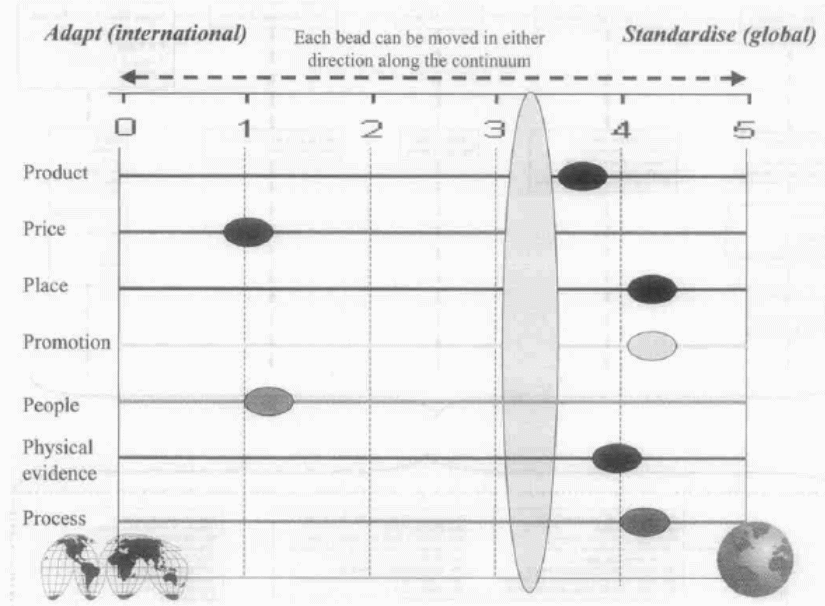
Figure 2: Vrontis’ Framework of AdaptStand Integration
Source: Vrontis & Sharp (2003, p.7)
According to the annual report 2011 of Coca Cola, it is a global brand and it introduces and designs different products consider consumer demand of the particular resign while customer is the prime factor to offer new brand, for instance, the sweetness in coca-cola’s products is decreased because of the customers’ needs and preferences.
Price
According to the annual report 2011 of Coca Cola, the price structure of the products is flexible while the marketers fixed the price considering the market condition and geographic segment (Coca Cola, 2011, p.8 and Kumar, 2012). At the same time, Coca Cola has the capability to determine the terms of the contract with bottle dealers with flexible conditions, which help the company to offer comparatively low price though having high market demand.
On the other hand, there are many factors influence the company to settle the price of the products, such as, volatility of the price raw materials, types of bottles and cans, terms of sale, bottler pricing, the channels in which the finished goods are sold and package mix (Coca Cola, 2011, p.8).
At the same time, price of the products of this company depends on many other factors, such as, supply or shortage of fuel and other energy sources, operating costs of the bottling partners, and so on; to reduce costs, it purchases raw materials from multiple suppliers while the relationship with suppliers also reflects the product price (Coca Cola, 2011, p.17).
In addition, Coco Cola follows different pricing strategy for each sun-brand, which also considers the strategies of the competitors while beverage market considered as oligopoly market (limited companies for large customer base) (Kumar, 2012); however, the pricing structure needs to adjust time to time considering quoted sugar price and fluctuations market price of nutritive sweetener (Coca Cola, 2011, p.9).
Here, it is important to point out that Coca Cola offers numerous products and the pricing structure of different products also different; for example, the price of orange and apple juice is comparatively high because of availability and price of ingredients, variability of weather conditions, other raw and packaging material including plastics, aluminium, and steel cans.
Intense market competition in the market is another crucial factor to offer competitive price because the purchasers can switch off to the low cost private label brands; on the other hand, to achieve long-term objective (Coca Cola, 2011, p.18).
Standardisation and adaptation
The points that favour globalisation are concerns for instance cost economics, transport expenses and networking, knowledge and practice, technological and operational capability; however, these features vary place to place for which the company bound to adapt to meet the criteria of the definite countries.
Moreover, this price rage for its products varies country to country because the purchasing power of the people of the developed countries like United States is too high, but the citizens of developing and less developing countries have limited resources; therefore, Coca Cola has to concentrate on the financial position of the buyers all over the world.
Place
The world’s leading beverage company “Coca cola” is the most favourite brand to the global customers (Kumar, 2012); however, the products of this company are available throughout the world through strong network and supply chain management system.
According to the annual report 2011 of Coca Cola, this company is known as global brand because it has business operation in over 200 nations and the distribution system operates through company-controlled bottling and partners, distributors, wholesalers and retailers; in addition, it continues to expand marketing presence along with boost unit case volume in developed, developing and emerging markets.
Strong brand awareness and stable structure assists the company to introduce new products and to capture growth all over the world; therefore, useful distribution network is the main threat for the small players in the market. According to the report of Kumar (2012), it considers the FMCG distribution pattern; in addition, it maintains two types of selling, such as –
- Direct Selling: it supplies products in points of sale by using their own transports; however, it has a number of vehicles for each place to supply bottles;
- Indirect Selling: it has whole sellers, retailers and agencies to provide service in all place
Standardisation and adaptation
The decision-makers of Coca Cola had not followed single strategy to enter foreign markets and it considered both standardisation and adaptation most of the case; for example, distribution channels in the Middle East are totally different from other place because Coca-Cola evidenced a long ban in the Saudi Arabia and after long interval it re-entered in this market in 1988.
On the other hand, Coca Cola is trying hard to carry on business in many countries like India, China, Bangladesh, and so on; therefore, it is essential for the company to consider culture and diversity of the country in which it starts business operation.
Promotion
Chakraborty (2012) stated that Coca-Cola uses the notion of insistent advertising to promote its products; for example, it initiates diverse ideas to sell products – it advertises mostly in electronic media (by TV-commercials, because it is one of the most smart methods to address mass markets); however, other mediums used are print media, outdoor advertising, direct marketing, and sales promotions.
Coca-Cola also uses IMC and multimedia campaign (through various games, contests, shopping); moreover, the company has its own website and it focuses on social networking sites like Facebook, YouTube, and Twitter to connect with the consumers for advertisement; conversely, it uses Public Relations by communicating with people regarding new products, current activities, and so on (Chakraborty, 2012).
Standardisation and adaptation
The figure number one shows that Coca Cola had maintained standardise promotion activities while Vrontis & Sharp (2003, p.7) stated that localised (adapted) promotion is necessary to increase sales volume from the foreign market. However, this report suggests to standardising the concept of public relation and other marketing communications tools (it turns to the (SAP SEM) Strategic Enterprise Management), but the advertising should based on the local culture to avoid any situation that is disheartening for the local communities.
Discussion on Whether Coca-Cola Has Adopted Appropriate Strategies
Chi, Yeh, and Yang (2009) suggested that increasing customer awareness influences them to buy the recognizable and favourable brand; so, if firms wish to beat the rivals, they have to make customers keen to buy their brands; moreover, Macdonald and Sharp (2000) argued that although customers know well about a product, brand awareness is still important to influence decision-making.
For example, Coca-Cola’s extraordinary marketing activities has enhanced its brand awareness a lot, and has turned it into a brand that customers strive for, making it a generic brand. Coca-Cola is a global corporation that over years, has adopted pioneering strategies focusing on policies that were the best suits for the particular time.
Starting from branding, advertising, and packaging, to marketing mix, and the other corporate level strategies – Coca-Cola’s approaches remained as benchmarks for most MNCs to follow. Vrontis and Sharp (2003) noted that the standardisation and adaptation of Coca-Cola’s marketing mix has been extremely well formulated to help the company to grow further:

Figure 3: Framework of marketing mix strategies
Source: Generated from Vrontis and Sharp (2003)
Coca-Cola’s successful adoption of appropriate strategies is evident through the ten years’ profit margin chart of the company:
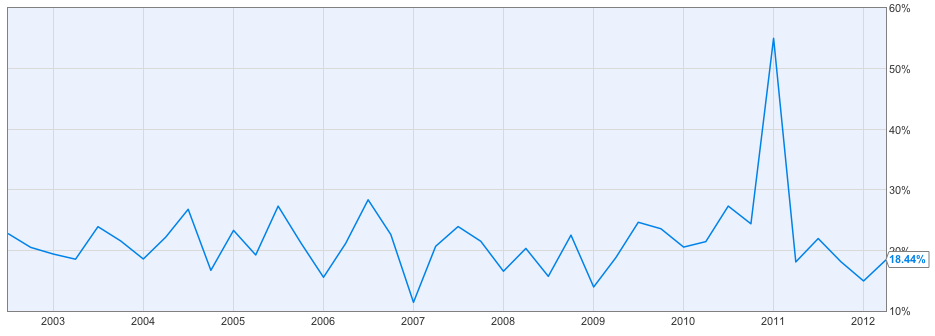
Figure 4: Coca-Cola’s profit margin for ten years
Source: Seeking Alpha (2012)
As a result of Coca-Cola’s strategy to endorse itself by means of various interesting promotional-activities, groundbreaking marketing by effective advertising, diversification in product line, strategy to enter new markets progressively by efficient placement, and offering affordable prices for everyone has meant that Coca-Cola’s revenues has continued to grow; the following figure shows the ten years’ revenue chart of the company:
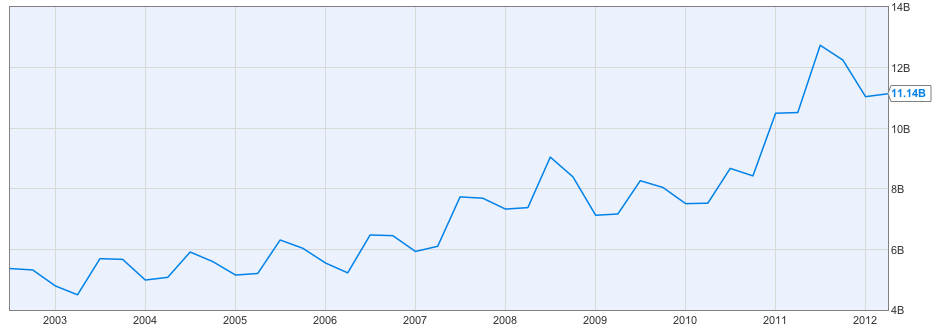
Figure 5: Coca-Cola’s revenue chart for ten years
Source: Seeking Alpha (2012)
Internationalisation Process Theory
Meyn & Kragh (2009, p.5) stated that business expansion in the international market and Johanson and Vahlne (2006) stated that under this concept a firm is increasingly participate in the global market. However, the following figures show the basic mechanism of internationalization and approaches to foreign market entry –
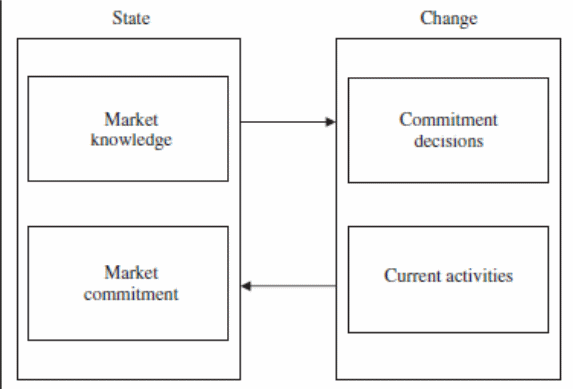
Figure 6: A Learning Model of Internationalization
Source: Johanson and Vahlne (2006, p.26)
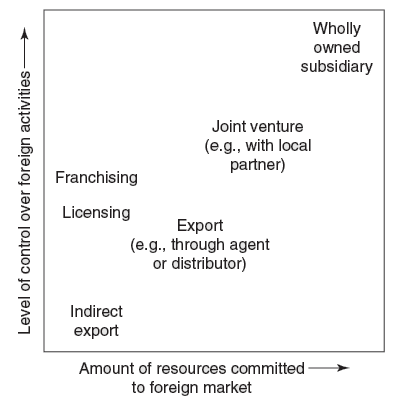
Figure 7: Approaches to Foreign Market Entry
Source: Bartlett, Ghoshal & Beamish (2008)
Stages Approach
Baronchelli & Cassia (2008, p.4) stated that Product Life Cycle and the Uppsala school are the key points of this approach; on the other hand, Johanson and Vahlne (2006, p.176) stated that internationalization process is outlined in five stages, such as–
- The domestic marketing stage where the company is not occupied in any export or foreign actions;
- In the pre-export stage, both external and internal stimuli serve to initiate a firm in the first steps toward exporting.
- Experimental involvement stage where the company exports to single or more overseas markets;
- The active involvement stage involves exporting to new foreign markets along with direct exporting;
- Committed involvement where the company will position using limited resources between the local and the host market;
Uppsala approach
Meyn & Kragh (2009, p.5) stated that Uppsala internationalization model recommends a systematic way to increase its international involvement; in addition, Baronchelli & Cassia (2008, p.4) argued that the company to develop business in local market and starts internationalization from psychically near.
Johanson and Vahlne (2006, p.176) stated that Uppsala school is the most frequently used model, which enhances the knowledge about local market to enter new market with similar culture, languages, political and economic environment.
Advantages and disadvantages Uppsala approach
- The model is too deterministic;
- Develop knowledge about local market;
- This model is not useful to the multinational companies, but effective for small and medium size companies;
- The world would become more standardized for reducing psychic distance;
However, Coca Cola had followed this approach at the initial stage of its operation.
Born Global
The key characteristics of the born global concept match with the business structure of Coca-Cola while 80% of the profits generated from the international market at present. In addition, this approach is the best for this company because it was established in 1889 and started business in global market from nineteenth century; in addition, the company is designing new brands, the distribution channel and supply chain management of this business considering global operation.
Analysis of advantages and disadvantages
- It is possible to reach diverse and large number of target market;
- The position of domestic market would not be outstanding
Analysing and Justifying the Extent to which Country of Origin Effect Influences Consumer Perception of Coca-Cola
Cai (1994) pointed out that customers use both intrinsic and extrinsic indications regarding products as the basis for assessing the product quality; intrinsic indications engage the material composition of a product, while extrinsic indications are product-related, but not part of the physical-product; rather extrinsic indications are part of the product’s total image and so can influence consumers’ perceptions.
Piron (2000) suggested that numerous extrinsic-aspects like brand image, brand-personality, or marketing influence the perception of customers regarding the quality of products; so, businesses focus on branding to help customers in making purchase-decisions by providing indications on quality and reliability of products – one such aspect that influences perceptions is the place of its production, which is referred as country-of-origin-effects.
Cai (1994) has also pointed out that numerous studies done in fields of international marketing have confirmed that the issue of country of origin causes certain kinds of consumer prejudice; such prejudice is based on the image of the country in the consumer’s minds; however, several aspects can contribute to the formulation of the country’s image among consumers.
These aspects, for example, include condition of the nation in terms of economy, technology, wealth-index, regulatory-mechanisms, government, and business-records – an economically well-developed, democratic, and technologically-advanced nation with high wealth-index, rigid regulatory-mechanisms, good business-records and market economy has extremely positive country-of-origin-effect; conversely, depending on these, if a nation scores low, it will have a relatively lesser optimistic (or negative) country-of-origin-effect.
It is notable that in case of Coca-Cola, the fact that the country of origin is very strong in terms of the above mentioned indicators, and as a result, in most of the circumstances, its country of origin effect is quite positive. The following analysis illustrates the way in which positive country of origin effect indicators apply in case of the USA, making it easier for Coca-Cola to create optimistic perceptions in foreign buyers’ minds, influencing their buying habits –
Table 1: Positive country of origin effect indicators of the USA
Source: Self generated
However, it is important to note that there are countries in which an anti- Americanisation attitude exists in the customers’ mind, which creates a negative country of origin effect; for example, in Saudi Arabia, as an US- levelled MNC, the Coca-Cola Company faces numerous challenges, which are unavoidably concerned with the challenges of USA in Saudi Arabia.
CCI (2004) pointed out that it is the pick time for America to take into account how the people of rest of the world observe present America, what are the major changes of public perception towards Americans during nineties, how the isolation and social life of Americans are changing, and anti- American moves are flourishing globally.
Until and unless America would change its foreign policy, this US brand could face raising challenge of decreasing sales revenue; conversely, for the Twin Tower attack on September 11, 2001, the US – Saudi relations had been deteriorating and are currently like a cold war situation while USA blames KSA for financing the terrorists as Al-Qaeda has close associations with KSA.
MEPC (2004) noted that the public perception in the Saudi-region is that Al-Qaeda is a creation of America and the terrorist attack of September 11, 2001 was a pre-planned drama of Americans that was staged to undermine the Arab world to exploit their petroleum resources. Moreover, the American aggression in Libya, Syria, Egypt, Tunisia, Yemen, Iraq, Afghanistan, and threats to Iran all are interlinked with the US relation with the Arab world, which are directly affecting the US brands like Coca-Cola in the region.
However, Dinnie (2003) stated that Leo Burnett Worldwide has conducted a survey on outlooks towards foreign-brands compared to local-brands (the places surveyed were China, South Korea, India, Indonesia, and Philippines), and the results showed that brands like Coca-Cola scored greatly in terms of optimistic outlooks and intents to buy, in spite of extensively-publicised embargos in Asian-markets.
Nevertheless, consumer perceptions are not always altered by the country of origin effect; Mikael (2010) noted that a good illustration is how Coca-Cola is believed to be a product from Trinidad and Tobago by a specific group of customers – these customers are not influenced by the country-of-origin effect, as they hardly know the company’s actual country of origin.
Reference List
Baronchelli, G. & Cassia, F. 2008, Internationalization of the firm: stage approach vs. global approach. Web.
Bartlett, C. A. Ghoshal, S. & Beamish, P. 2008, Transnational management: text, cases, and readings in cross-border management, McGraw-Hill, New York.
Cai, Y. 1994, Country-Of-Origin Effects On Consumers’ Willingness To Buy Foreign Products: An Experiment In Consumer Decision Making. Web.
CCI, 2004, America, the World, and the New Challenges for Global Brands. Web.
Chakraborty, S. 2012, Integrated Marketing Communications Tools Used By Coca -Cola. Web.
Chi, H. K., Yeh, H. R., and Yang, Y. T. 2009, The Impact of Brand Awareness on Consumer Purchase Intention: The Mediating Effect of Perceived Quality and Brand Loyalty. The Journal of International Management Studies, vol.4, no.1, pp.135-144.
Coca Cola. 2011, Annual Report 2011 of Coca Cola. Web.
Dinnie, K. 2003, Country-Of-Origin 1965-2004: A Literature Review. Web.
Johanson, J. & Vahlne, J-E. 2006, ‘Commitment and Opportunity Development in the Internationalization Process: A Note on the Uppsala Internationalization Process Model’, Management International Review, vol.46, no. 2, pp. 165-178.
Kumar, B. 2012, Marketing mix of Coca Cola. Web.
Macdonald, E. K. & Sharp, B. M. 2000, ‘Brand awareness effects on consumer decision making for a common, repeat purchase product: A replication’, Journal of Business Research, vol.48, no.5.
MEPC. 2004, US Challenges and Choices Saudi Arabia: A View from the Inside. Web.
Meyn, C. & Kragh, H. 2009, The Born Global Impact on Traditional Internationalization Theory. Web.
Mikael, A. 2010, Place-Of-Origin Effects A Conceptual Framework Based On A Literature Review. Web.
Piron, F. 2000, ‘Consumers’ Perceptions of The Country-of-Origin Effect On Purchasing Intentions of (In) Conspicuous Products’, Journal of Consumer Marketing, vol.17, no.4, pp.308-321.
Seeking Alpha. 2012, Coca-Cola: Keeping Investors Smiling. Web.
Vrontis, D. & Sharp, I. 2003, ‘The Strategic Positioning of Coca-Cola in Their Global Marketing Operation’, The Marketing Review, vol.3, no.1, pp.289-309.